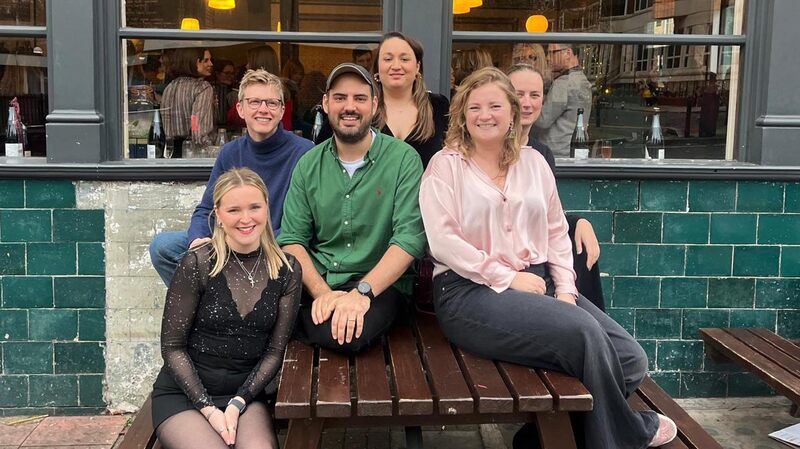You are viewing your 1 free article this month. Login to read more articles.
Collaboration 'critical' to addressing lack of diversity in UK children's publishing, says ACE
People from BME backgrounds working within the children’s literature sector have been frustrated by racism and microaggressions, unconscious bias, and inequality of access, according to a new report by Arts Council England, which stresses cross-sector collaboration is "critical" to meaningful change.
Authored by Cathy Harris, Bernadette Stiell and David Leather from the Centre for Regional Economic and Social Research (CRESR) at Sheffield Hallam University, among the report’s key findings were numerous examples of racism and microaggressions evidenced by “inappropriate, ignorant or stereotypical attitudes, assumptions and behaviours” that BME respondents said had made them feel unwelcome in the industry.
In one example, a black editorial assistant talked about a senior editor who would use inappropriate language (such as 'coloureds') despite being asked not to. In another, a black trainee working for a large children's publisher described being mistaken for a cloakroom attendant at a high-profile book launch.
The report, in which ACE emphasised cross-sector collaboration and long-term commitment to diversity were "critical" to effect meaningful change, was put together after an online survey yielded 330 responses from individuals working across the sector, followed up by 28 in-depth interviews.
Although large publishers and other organisations have been making efforts to improve representation, the majority of participants (59% overall) said more needed to be done to tackle unconscious bias. Suggestions included embedding commitment to diversity in the ethos and policies of organisations and ensuring more diverse advisory boards and selection panels and representation at events, festivals and awards.
The main barriers to accessing the sector highlighted in the report included concerns over low pay, falling author incomes and the London-centric nature of the industry itself. “A lack of role models” is deterring people from BME backgrounds from entering the profession further, the report said, with 60% of BME respondents agreeing not enough talented BME young people were aspiring to work in the sector because of this.
On top of these issues, some BME survey participants reported feeling "pigeon-holed" because of their ethnicity, "often" feeling expected to promote or comment on diversity issues because of their ethnicity alone, according to the report.
Three-quarters of survey respondents overall agreed that diverse books (defined as books which include BME representation) are often expected to focus on issues faced by underrepresented groups, with authors from BME backgrounds reporting feeling pressured to write books relating to their ethnicity. One 23-year-old self-published author commented: "The black stories they say people are interested in are about slavery, asylum seeking, extremes of culture like spiritualisation, dreadlocks. There’s nothing wrong with those things but they’re not my story."
Perceptions of a limited market for diverse books and lack of investment in the promotion and marketing of diverse books hampered publication success for BME writers at mainstream publishing houses, a number of examples revealed. The route to publication is also weighted in favour of white authors, some publishers and agents suggested, because of publishers’ heavy workloads which results in a preference for more traditional routes to publication over the slush pile and the recommissioning of authors already on their books who are more likely to be white.
Misconceptions around the availability of diverse books, due to communication issues along the supply chain, is also hindering progress, the report said.
After hearing from participants – including mainstream, independent and specialist publishers, libraries, charities, membership organisations, booksellers, authors, illustrators, agents and education providers – ACE has recommended a cross-sector approach as “critical”.
Its recommendations include making training on diversity and inclusion "mandatory", with bespoke unconscious bias training for the children’s literature sector, prioritising those in key decision-making roles. It also recommends the provision of funding for “medium and longer terms” inclusive programmes, e.g. “Creative Progression” programmes that support underrepresented groups beyond access/ internships, as well as for further research and the monitoring of diversity.
After one author raised concerns around who should write diverse characters among white authors and illustrators, ACE also has recommended networks of diversity advisors and the use of sensitivity readers to advise and guide the sector. Meanwhile it sought more creative freedom for diverse creators “to write beyond narrow issues and stereotypical characters”.
Partnerships with schools and libraries to support direct engagement with more role models, and to help schools discover more diverse books and authors, are also encouraged.
"There are signs that the parts of the sector are on a purposeful journey, moving in the right direction with pockets of innovative practice emerging that are gaining attention and momentum. However, these need to extend and embed more systematically across all parts of the children’s literature sector for sustained, meaningful change to occur so that children’s literature as a whole is truly reflective of the ethnic diversity and reality of children’s lives," the report read.
"The cross-sector aspect of these recommendations is critical in ensuring that all parts of the sector are progressing at a pace that enables coordinated and coherent change. These recommendations build on the existing evidence base and on the initiatives already underway to address the lack of ethnic diversity and representation in the children’s literature sector. They require action from publishers, booksellers, agents, suppliers, editors, authors and illustrators, public and private sector funders and commissioners, lobby groups, charities, libraries, schools, educators, researchers and policy makers. These stakeholders need to come together with a commitment to tackle these issues collectively as well as within their own organisations."
The research was commissioned by ACE in acknowledgement of the poor representation of people from BME backgrounds in the UK’s children’s publishing sector, to better understand it, and to help improve in this area. BME representation in the publishing workforce is at 12% next to 14% for the UK population, according to figures from the PA's workforce survey, while only 6% of children’s book creators whose work was published in 2017 were from BME backgrounds, according to research commissioned by BookTrust, and only 4% of books for 3–11 year olds featured any BME characters, according to research by the Centre for Literacy in Primary Education (CLPE).















